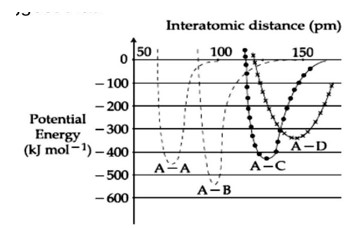Class 12th
Get insights from 12k questions on Class 12th, answered by students, alumni, and experts. You may also ask and answer any question you like about Class 12th
Follow Ask QuestionQuestions
Discussions
Active Users
Followers
New answer posted
2 months agoContributor-Level 10
Total mass of reactant should be greater than that of product.
This condition is only fulfilled in case- 3
New answer posted
2 months agoContributor-Level 10
E = E? (1 − ax²)
F = qE?
acceleration = F/m = (qE? /m) (1 - ax²) = v (dv/dx)
(qE? /m) ∫? (1 - ax²)dx = ∫? vdv; (qE? /M) (x - ax³/3) = 0
x (1 - ax²/3) = 0; x = 0 & x = √ (3/a)
New answer posted
2 months agoContributor-Level 10
SN2 is a bimolecular reaction. This is because as per the rate law,
Rate = k [substrate] [nucleophile]
Here, the rate determining step is dependent on both substrate and nucleophile, unlike SN1 who only involves substrate. Therefore, SN2 is proved to be bimolecular.
New question posted
2 months agoNew answer posted
2 months agoContributor-Level 9
A - B has the lowest potential energy and it means it has stronger bond.
New answer posted
2 months agoContributor-Level 10
Binding energy = (50M? + 70M? – Msn)C²
= (50.3915 + 70.6069 – 119.902199)U²
= (1.0962U)C²
= 931 * 1.0962MeV
Binding energy per neucleon
= (931 x 1.0962)/120 MeV
= 8.5MeV
Taking an Exam? Selecting a College?
Get authentic answers from experts, students and alumni that you won't find anywhere else
Sign Up on ShikshaOn Shiksha, get access to
- 65k Colleges
- 1.2k Exams
- 679k Reviews
- 1800k Answers






